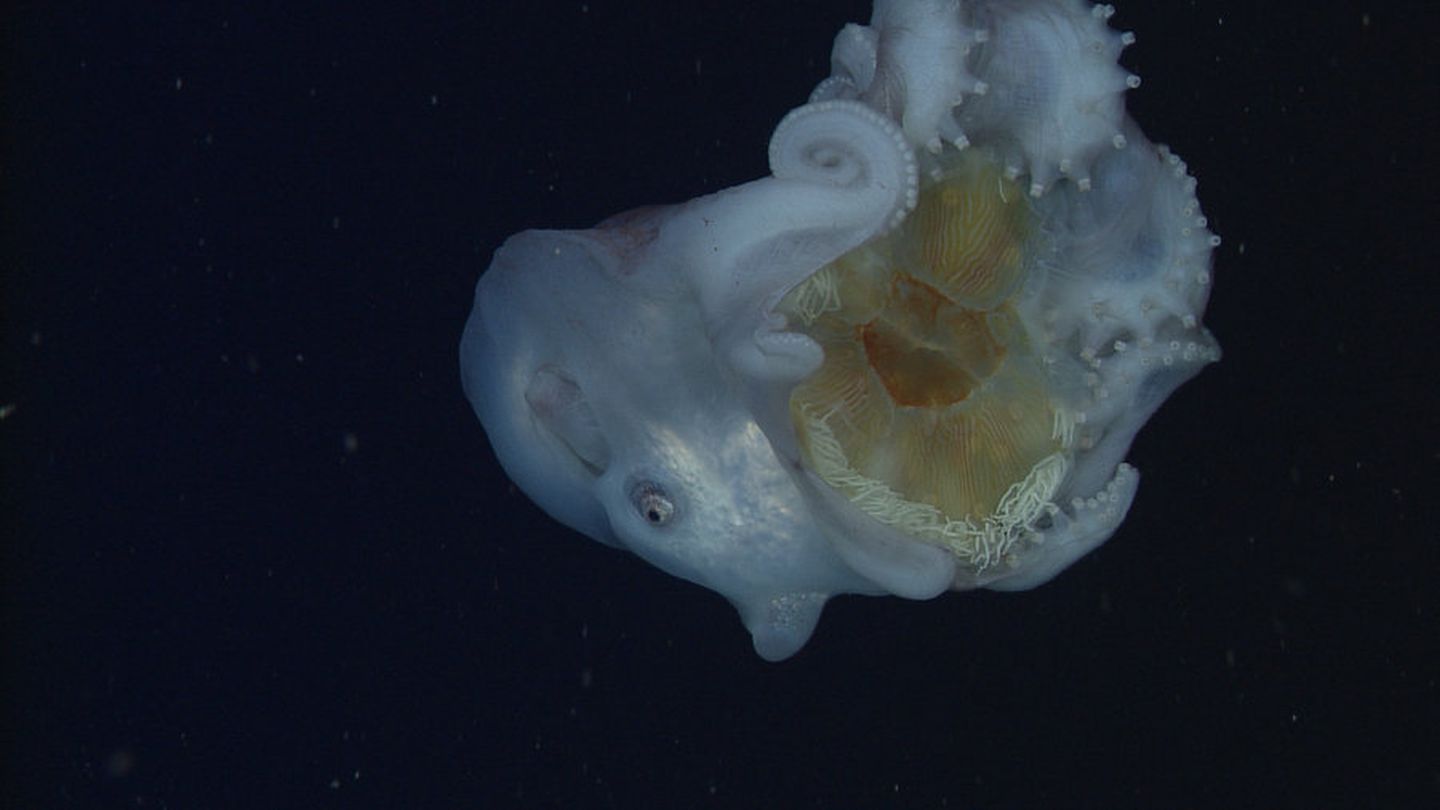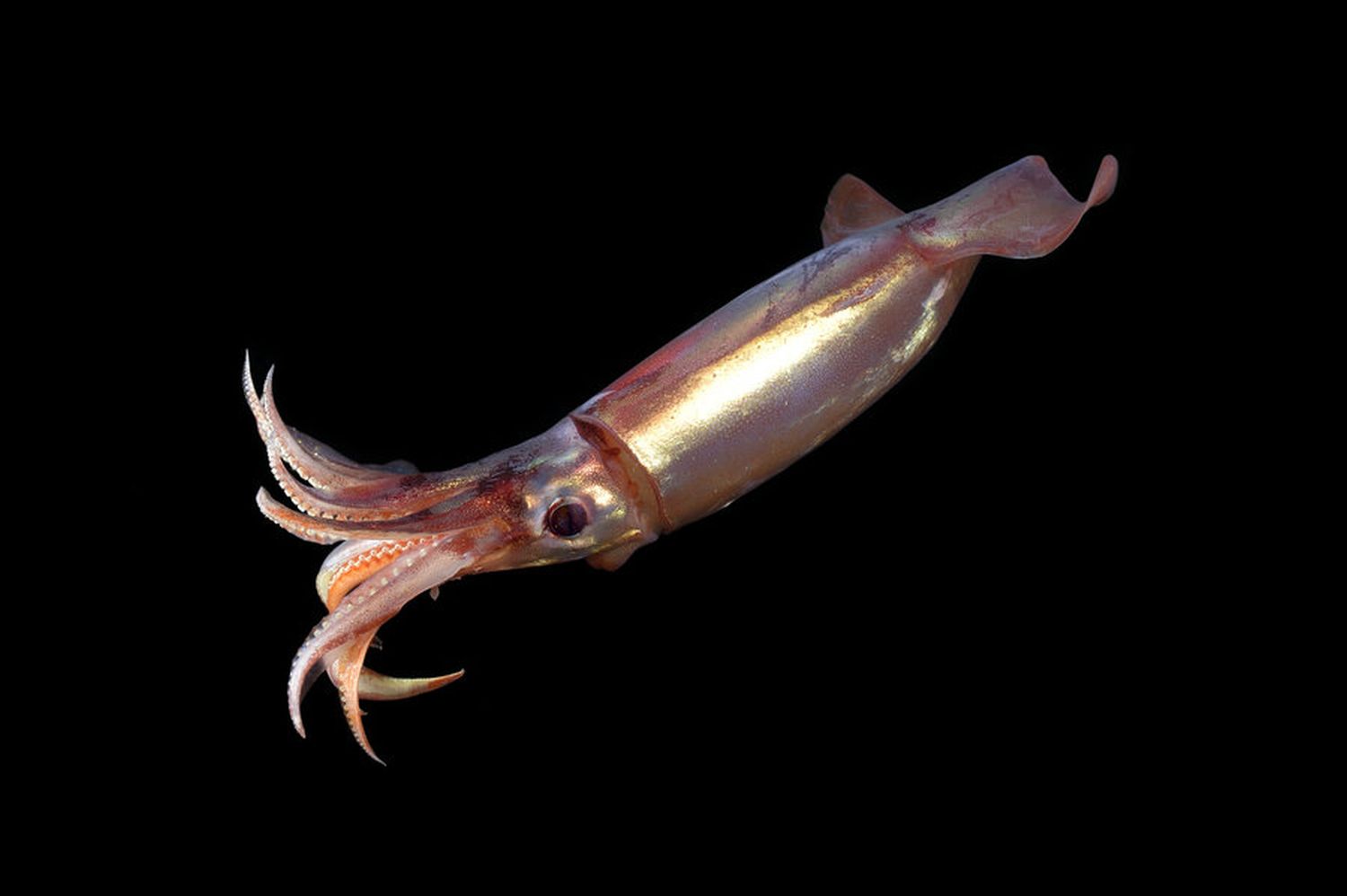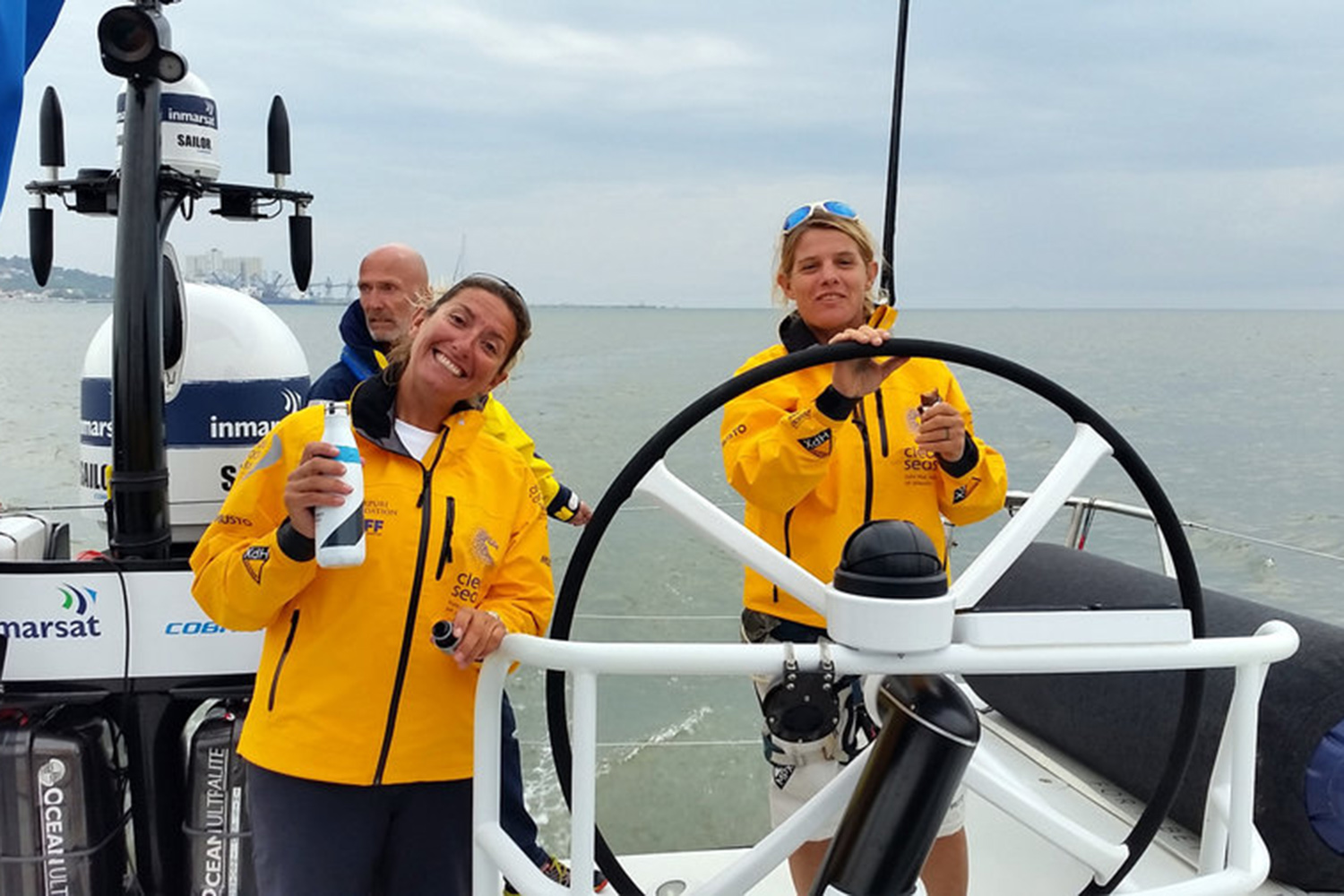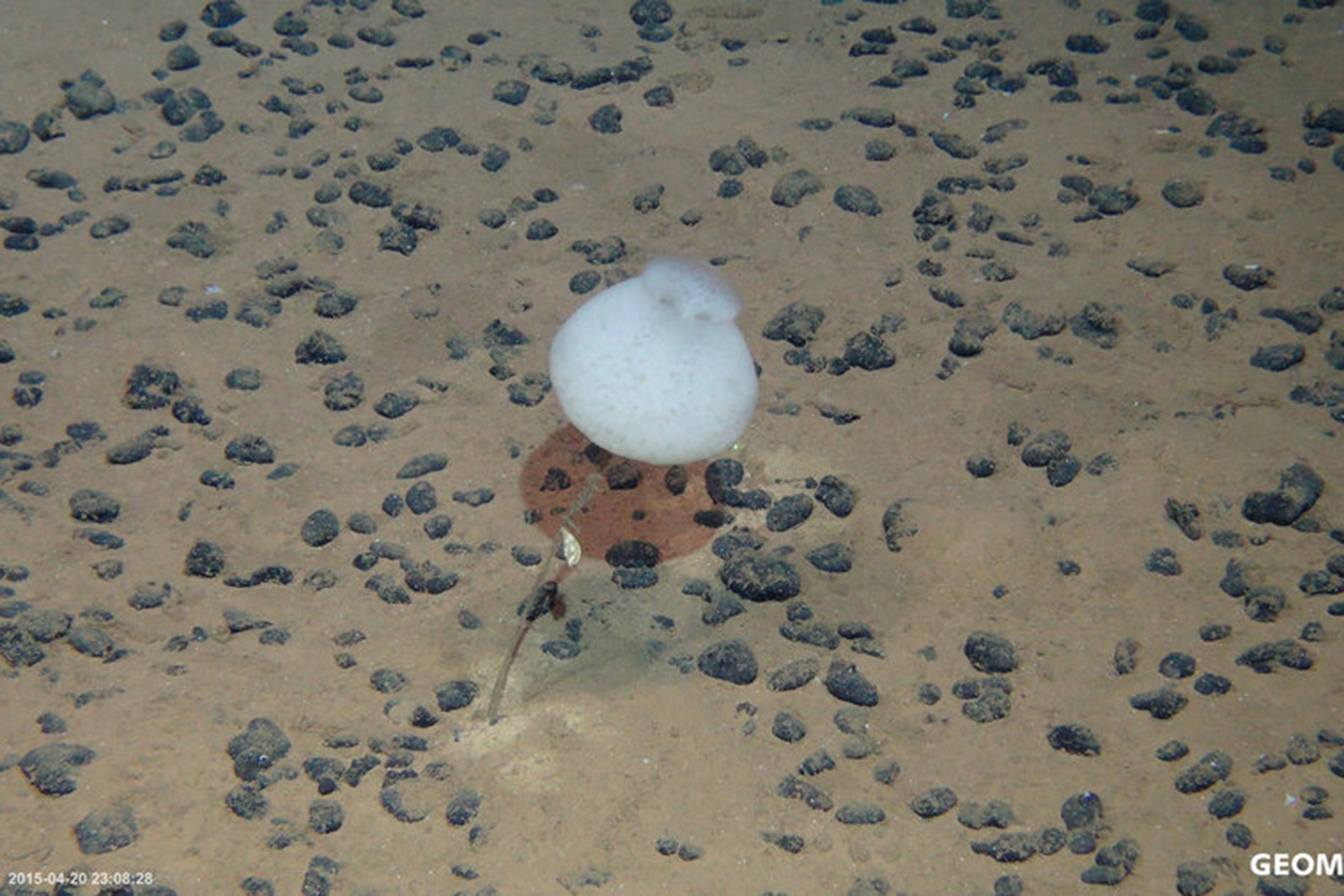The open ocean is the largest habitat on this planet. This so-called pelagic zone is home to tiny plankton organisms, jellyfish, squid, fish and marine mammals. But the depth and breadth of the ocean make it difficult to explore this zone. Many species living there are probably still unexplored, and the behavior of many animals in their natural habitat has rarely been studied. Thanks to recent technological developments science is increasingly able to take a closer look at the large and hidden depths below the water's surface.
Dr. Henk-Jan Hoving from the Kiel "Cluster of Excellence"/ GEOMAR Helmholtz Centre for Ocean Research Kiel and his colleague Dr. Steve Haddock from the Monterey Bay Aquarium Research Institute (MBARI) have now been able to prove that the giant deep-sea octopus Haliphron atlanticus feeds partly on jellyfish. This has been shown by the evaluation of video recordings from the deep sea which the scientists have now published in the international journal Scientific Reports.
"Haliphron atlanticus is among the largest commonly known octopus types. Females can reach a length of up to four meters and a weight of up to 75 kilograms, while the males do not exceed 30 centimeters in length. The species lives in the deep sea and almost nothing was known about its habits until now," reports Dr. Hoving. Scientists from MBARI have sighted the species alive only three times during the past 27 years. More often, dead animals are found in the nets of trawlers.
The MBARI team has now filmed these creatures, which are difficult to locate, with the help of remote-controlled underwater robots, so-called ROVs (Remotely Operated Vehicles). During an expedition in Monterey Bay and off the coast of Hawaii, Haddock and his team discovered a specimen that held a large jellyfish in its arms.
Afterwards, the team studied the footage of two previous encounters with Haliphron. In this process, they also found that one of the other specimens also held a jellyfish in its tentacles. "When we then examined the stomach contents of five dead specimens, we could see that they had also eaten jellyfish and other gelatinous prey," reports Dr. Hoving. These results suggest that jellyfish make up an important part of the diet of the deep-sea octopus.
Jellyfish are widespread in the deep sea and are a rather an easy catch for the slow octopuses. The defense mechanisms of the jellyfish are comparatively easy to overcome for a large but slow predator such as the deep-sea octopus. After having digested the nutrient-rich parts, the female octopus might perhaps use the bell of the jellyfish with its stinging tentacles for the purpose of self-defense.
The discovery of the relationship between haliphron and gelatinous zooplankton confirms previous findings on eight-armed squid. Of three other families of this group, it was already known that they eat jellyfish or use them for their own defense.
Since Haliphron atlanticus is itself prey for sperm whales, blue sharks and swordfish, the discovery also allows for conclusions about the entire ecosystem of the deep sea. "So far gelatinous zooplankton such as jellyfish and similar organisms have been underestimated in their function as food for many other marine inhabitants and thus as part of the entire food chain," says Dr. Hoving.
Original work:
H.J.T. Hoving, H.J.T., S.H.D. Haddock (2017): The giant deep-sea octopus Haliphron atlanticus forages on gelatinous fauna. Scientific Reports 7, http://dx.doi.org/10.1038/srep44952
Links:
www.mbari.org/a-giant-deep-sea-octopus-is-a-sucker-for-jellies report of the Monterey Bay Aquarium Research Institute
https://youtu.be/CzU8CUXxLsAMBARI video showing Haliphron atlanticus holding a large egg-yolk jellyfish in Monterey Canyon
Contact:
Frederike Tirre (Future Ocean, Public Relations), Tel.: 0431 880-4726
presse@ozean-der-zukunft.de
Jan Steffen (GEOMAR, Communication & Media), Tel.: 0431 600-2811
presse@geomar.de
…



